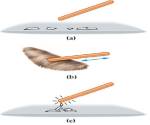Description
Biological cells use bioelectricity to store metabolic energy, to do work or trigger internal changes, and to signal one another. Bioelectromagnetism is the electric current produced by action potentials along with the magnetic fields they generate through the phenomenon of electromagnetism.
Bioelectromagnetism is studied primarily through the techniques of electrophysiology. In the late eighteenth century, the Italianphysician and physicist Luigi Galvani first recorded the phenomenon while dissecting a frog at a table where he had been conducting experiments with static electricity. Galvani coined the term animal electricity to describe the phenomenon, while contemporaries labeled it galvanism. Galvani and contemporaries regarded muscle activation as resulting from an electrical fluid or substance in the nerves.
Bioelectromagnetism is an aspect of all living things, including all plants and animals. Some animals have acute bioelectric sensors, and others, such as migratory birds, are believed to navigate in part by orienteering with respect to the Earth's magnetic field. Also,sharks are more sensitive to local interaction in electromagnetic fields than most humans. Other animals, such as the electric eel, are able to generate large electric fields outside their bodies.
In the life sciences, biomedical engineering uses concepts of circuit theory, molecular biology, pharmacology, and bioelectricity. Bioelectromagnetism is associated with biorhythms and chronobiology. Biofeedback is used in physiology and psychology to monitor rhythmic cycles of physical, mental, and emotional characteristics and as a technique for teaching the control of bioelectric functions. Bioelectromagnetism is also used in certain touch screen technologies that don't actually rely on "touch" but rather on recognizing the electromagnetic waves of body (e.g. the finger) when it comes close to the screen[2].
Bioelectromagnetism involves the interaction of ions. There are multiple categories of Bioelectromagnetism such as brainwaves,myoelectricity (e.g., heart-muscle phenomena), and other related subdivisions of the same general bioelectromagnetic phenomena. One such phenomenon is a brainwave, which neurophysiology studies, where bioelectromagnetic fluctuations of voltage between parts of thecerebral cortex are detectable with an electroencephalograph. This is primarily studied in the brain by way of electroencephalograms.
Manusia tidak bisa melihat, merasa, mencium atau menyadari keberadaan listrik dengan inderanya, baik untuk muatan maupun untuk medan listriknya. Baru pada akhir abad 18 hal-hal mengenai listrik diteliti.
Bagaimana Kelistrikan & Kemagnetan di bidang Medis ??
Berlanjut di Seri Fisika Kesehatan__Biolistrik 02: Kelistrikan Otot jantung
Sumber:
http://alifis.wordpress.com/2010/01/14/seri-fisika-kesehatan__biolistrik-01/
(Alifis Corner)




